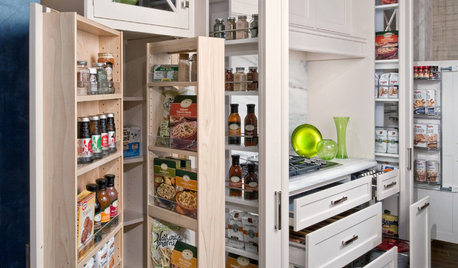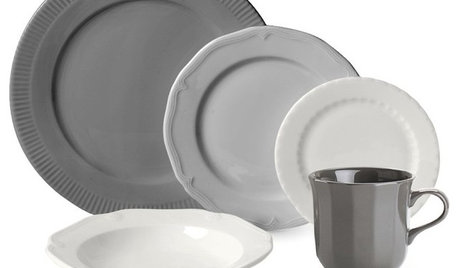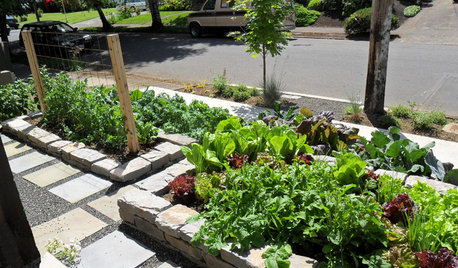Food prices - are they really going up that much?
foodonastump
13 years ago
Related Stories

GARDENING AND LANDSCAPINGHow to Make a Pond
You can make an outdoor fish paradise of your own, for less than you might think. But you'll need this expert design wisdom
Full Story
KITCHEN DESIGNDeliciously Simple: Food Photographer Warms Up a Rental Kitchen
See how a San Francisco cook and blogger makes her small kitchen shine
Full Story
KITCHEN DESIGNSee-Through Refrigerators Dare to Go Bare
Glass-front fridge doors put your food and drinks on display, for better or worse. See the benefits and disadvantages
Full Story
KITCHEN STORAGEGoing Up: Vertical Storage Holds More Kitchen Stuff
Fit more of what you need at hand by looking to narrow or shallow kitchen spaces and walls
Full Story
HEALTHY HOME12 Ways to Set Up Your Kitchen for Healthy Eating
Making smart food choices is easier when your kitchen is part of your support team
Full Story
FARM YOUR YARD6 Things to Know Before You Start Growing Your Own Food
It takes time and practice, but growing edibles in the suburbs or city is possible with smart prep and patience
Full Story
PRODUCT PICKSGuest Picks: Subtle Gray Tableware Gives Food the Spotlight
Let your holiday feast stand out against understated gray and silver dishes, platters, linens and cutlery
Full Story
FARM YOUR YARDHello, Honey: Beekeeping Anywhere for Fun, Food and Good Deeds
We need pollinators, and they increasingly need us too. Here, why and how to be a bee friend
Full Story
FRONT YARD IDEASWelcome Edibles Into the Front Yard for Fresh Food and More
Give your front yard design a boost and maybe even make new friends by growing fruits and vegetables
Full Story
FARM YOUR YARDTo Get the Food They Believe In, These Urbanites Grow Their Own
Home gardeners farming on their city lots find that local, organic food isn’t the only reward
Full Story




grainlady_ks
jojoco
Related Discussions
Will more food be going extinct - 'Future of Food'
Q
How much food is too much food?
Q
Food prices are up after xmas.....
Q
Peanut Butter prices going up 30% 11/1/11
Q
sally2_gw
Jasdip
triciae
grainlady_ks
loves2cook4six
jimster
metaxa
metaxa
dcarch7 d c f l a s h 7 @ y a h o o . c o m
triciae
arkansas girl
metaxa
dcarch7 d c f l a s h 7 @ y a h o o . c o m
foodonastumpOriginal Author
grainlady_ks
triciae
dcarch7 d c f l a s h 7 @ y a h o o . c o m
Jasdip
arkansas girl
metaxa
dcarch7 d c f l a s h 7 @ y a h o o . c o m
metaxa
soonergrandmom
dcarch7 d c f l a s h 7 @ y a h o o . c o m
Bumblebeez SC Zone 7
Terri_PacNW
Jasdip
cookie8
arkansas girl
grainlady_ks
Rusty
sally2_gw
caliloo
grainlady_ks
jimster
annie1992
John Liu
jimster
coconut_nj
John Liu
jimster
dcarch7 d c f l a s h 7 @ y a h o o . c o m
John Liu
dcarch7 d c f l a s h 7 @ y a h o o . c o m
Terri_PacNW
Teresa_MN
annie1992
John Liu